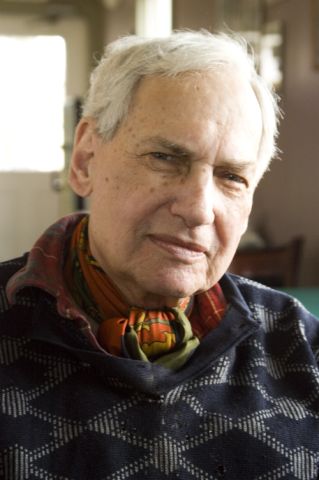Paul Brach, artist and educator, is dead.
 Paul Brach
Paul Brach
Paul Henry Brach, an important figure in the avant garde art world of the 50's and 60's, a distinguished lecturer and pioneering arts administrator died Friday the 16th at his home in East Hampton, New York. He was 83, the cause was prostate cancer.
Mr. Brach's life was animated by three passions: painting, teaching and the equestrian culture of the American West. Though born in Brooklyn, as a teen Brach traveled to the Southwest to become a working cowboy. He enrolled at the University of Iowa yet was shortly drafted to fight in World War II.
During the war, Mr. Brach was twice decorated and had many colorful and harrowing experiences including landing on Omaha Beach and the liberation of a Nazi concentration camp. Though he had nothing to do with its making, many of these experiences are represented in the film, "The Big Red One."
After the war, Brach returned to Iowa where he met his future wife, the artist and educator, Miriam Schapiro. They received their MFA's, spent a brief stint as faculty at the University of Missouri and then ventured back to New York City to take their place in the blossoming avant garde art scene.
Upon his return, Brach took several teaching positions and rented a studio above Fraunces Tavern. Brach's early style, with elements of cubism, was soon exchanged for the formal abstract expressionism which has become emblematic of the 50's and he was an active member of what came to be called the Second Generation New York School.
In 1955 Mr. Brach had a son, Peter, a culture consultant now surnamed von Brandenburg (a.k.a the critic and theorist, Blackhawk) and acquired a historic though ramshackle barn in East Hampton, Long Island, where he then summered with his family and became part of the early Hamptons art colony.
Brach was one of the first artists to exhibit with the seminal art dealer, Leo Castelli, and later also showed at Cordier & Eckstrom and then with Andre Emmerich. During this phase he moved beyond abstract expressionism and adopted a harder edged style featuring a cool palette and elements related to early Minimalism.
1967 saw Mr. Brach relocate to the West Coast becoming chairman of the art department at the University of California, San Diego. Two years later he was offered, and accepted, the far more intriguing position as inaugural Dean of Arts at California Institute of the Arts. During this period, the family lived in Los Angeles. Brach hired a legendary faculty, including renowned artists and teachers such as John Baldessari, and presided over what became the incubator of an entire generation of culturally crucial fine artists. While out west, Mr. Brach was also able to indulge a lifetime desire and purchased a quarter horse.
However by 1975 Brach yearned to return to New York and took the Chair of the Division of Arts at Fordham University, Lincoln Center. Regarding this period he would come to comment half-jokingly that his most lasting contribution had been granting a theatrical scholarship to Denzel Washington. After three years, Mr. Brach wearied of his administrative duties and how little time they left him to teach painting and art history, to say nothing of spending more time in his own studio. He was considered by many to be a charismatic and brilliant lecturer yet by 1979 he determined to devote all his time to his own art practice.
Brach's artwork then underwent a further metamorphosis. In this phase it featured lyrical abstraction and a precise yet organic metier. Finally Brach added figurative elements, initially silhouettes of the ridges and mesas of his beloved Southwest, and his palette grew warmer and more earthy in keeping with that addition. Later still he would add equestrian imagery and recapitulate the use of circular forms from his neo-Minimalist period.
In 1998 Mr. Brach relinquished his Soho loft and thereafter lived in the renovated house in East Hampton full time. He continued to devote time to riding and even played polo informally until an advanced age. He also painted every day until quite recently. His final exhibit of new work will open December 6th at the Flomenhaft Gallery in New York City. He is survived by his wife, his son, and a brother, Roger.